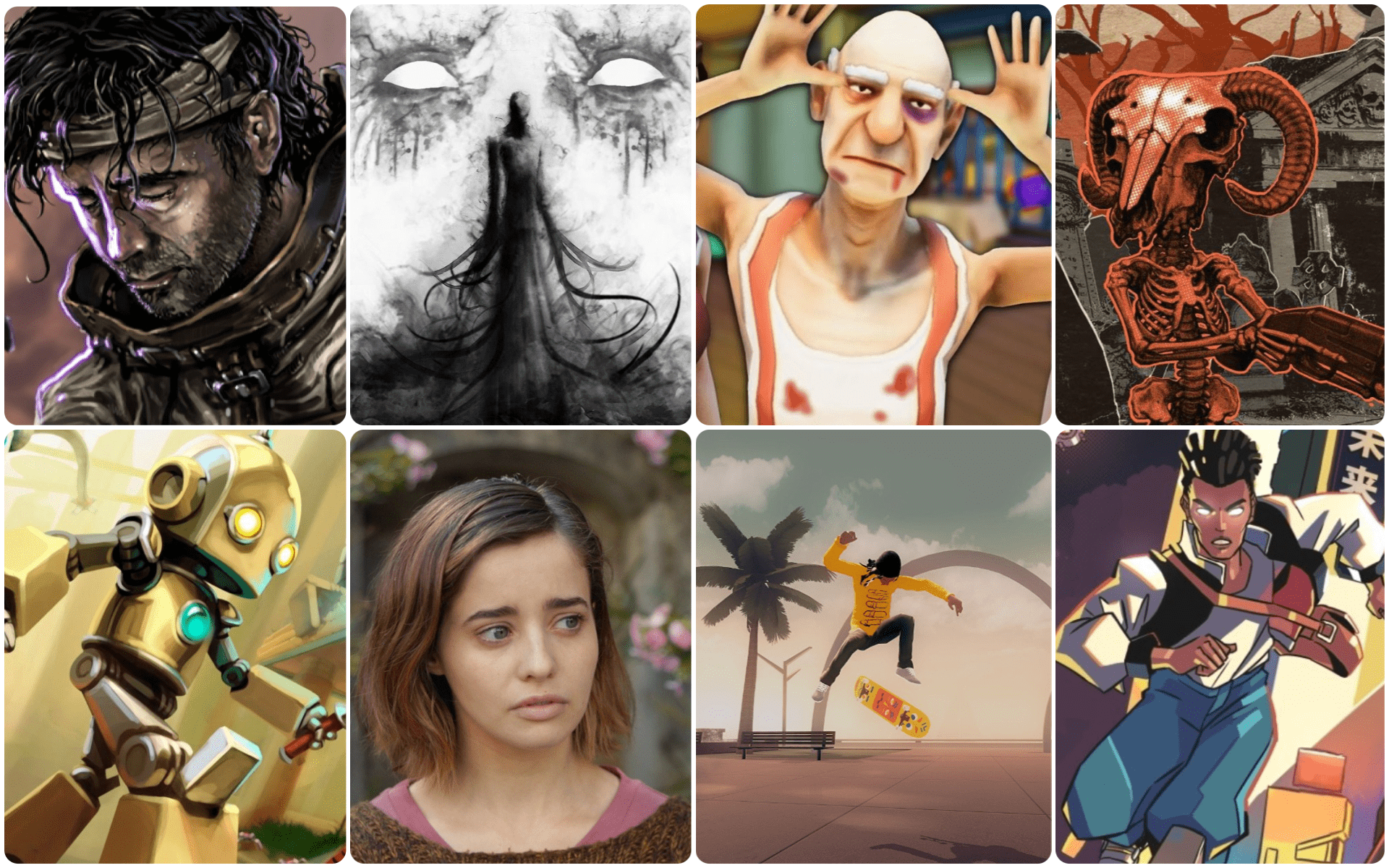Skate City Review (Switch) – Kick, Push, Chill…
Skate City is an odd game. Skateboarding and tranquillity are not synonymous words, generally. Considering that skateboarding is classed as an “extreme sport”, it’s always a surprise when something chill and more realistic comes along. In fact, when any sport that’s had some kind of X-Games affiliation tries to deviate, it’s met with either surprise or skepticism.
We have had some grounded sidewalk surfing games. EA’s Skate series lets you cruise about and pull off impressive, “normal” trick sequences. Maybe not so much in later entries, but the first one definitely. Then more recent efforts like Session and Skater XL have also tried to create the same magic, to some degree. But what about the 2D world?
Well, there hasn’t been many. Oh sure, there’s been 2D skateboarding games, no doubts there. Just nothing that encourages you to take a calmer approach with some lo-fi beats accompanying it. So when a game subverts that approach and doesn’t have you flipping over helicopters or have washed out Jackass stars attached to it, it’s a welcome change.
Now, after an eighteen month exclusivity deal with Apple is finally up, Skate City is making its way to a bigger audience. It’s an arcade game, but not as you’d expect it. Grab your board and we’ll carve a line through this review to find out why.
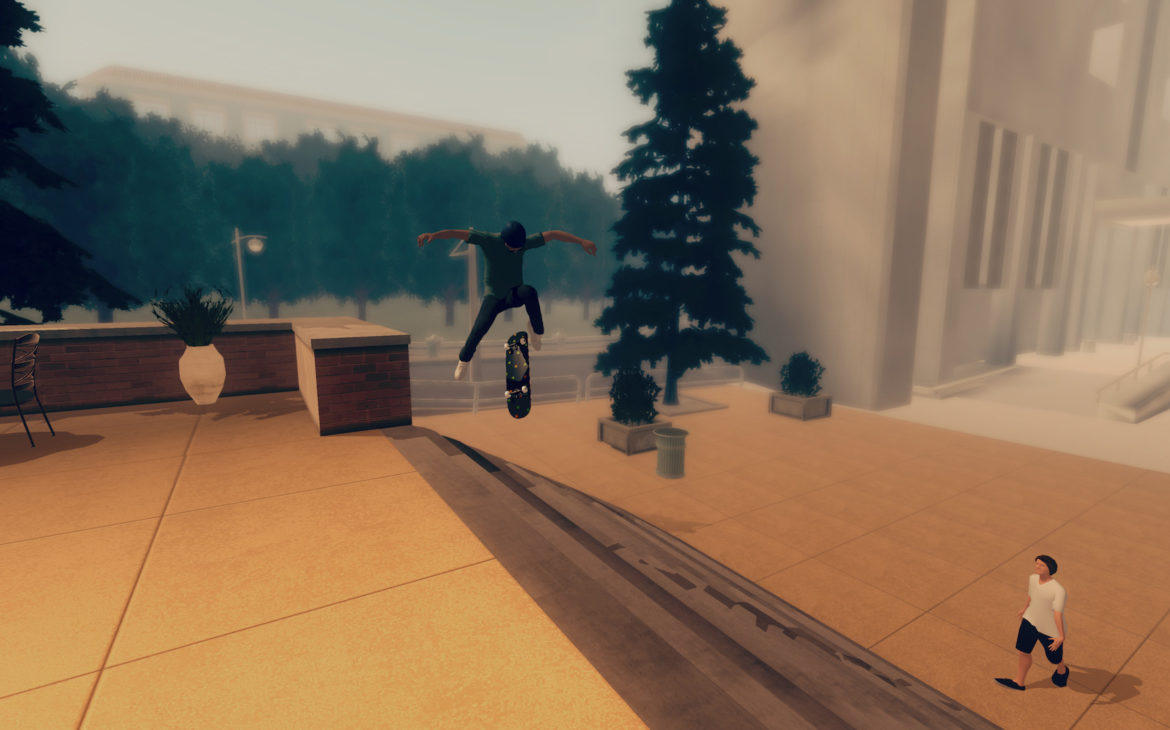
Curb Your Skepticism
More so in the last decade, the whole “games are art” concept has definitely broadened. What started with David Cage’s brand of “interactive movies”, at least in a more mainstream fashion, has branched into the calm, wistful likes of Journey, Flower and even Gris.
Skateboarding, by contrast, would normally be at the other end of that spectrum. Take the twenty year old Tony Hawk’s series, for example, making a revival and showing that there’s still a demand for spectacle. It’s not just the fully 3D, AAA games that are showing off their tricks, either. Arcade, 2D skaters like OlliOlli are equally capable of pulling their weight too.
It’s not often we see something that melds two contradictions together. It’s not uncommon, with calm-yet-equally-frustrating games like Lonely Mountains: Downhill fusing mountain biking with relaxation. My point is, laboriously as I’ve made it, is you don’t tend to associate peaceful experiences with something dubbed as an extreme sport.
When a game like Skate City comes out and embraces the more chill side of both gaming and skateboarding, you’d think it was bold as brass for trying to defy tradition. Thankfully, and I speak for myself in this regard for sure, that with more open-mindedness and broader expectations, this is very welcome indeed.

Kick Forward And Relax
If that statement sounds pretentious, like Skate City is being deliberately hipster, you’ll see what I mean when the main menu loads up.
You’re greeted by a sunset-backed menu screen, with what sounds like a non-copyright twenty one pilots (yes, deliberate lowercase) instrumental playing. No Goldfinger, no techno or flashy colours. No insane spins from famous skateboarders. Just a casual screen with a few board-pushers pulling the occasional trick as they skate past camera.
Even when you start the game, the first option (after you pick your destination) is Endless Skate. The game is saying, “Challenges? Yeah they’re just below it. Why not just skate though?” and that’s when it kicks in. To clarify, it’s not an “endless runner”. You don’t die, nor do you have a life system or anything like that. Endless Skate is that: you can cruise, pop some tricks and lines and just… skate.
Whilst that may sound shallow, it’s far from it. But before we get into that and the extra modes, let’s find out what makes your skater grind… and flip, spin, etc.
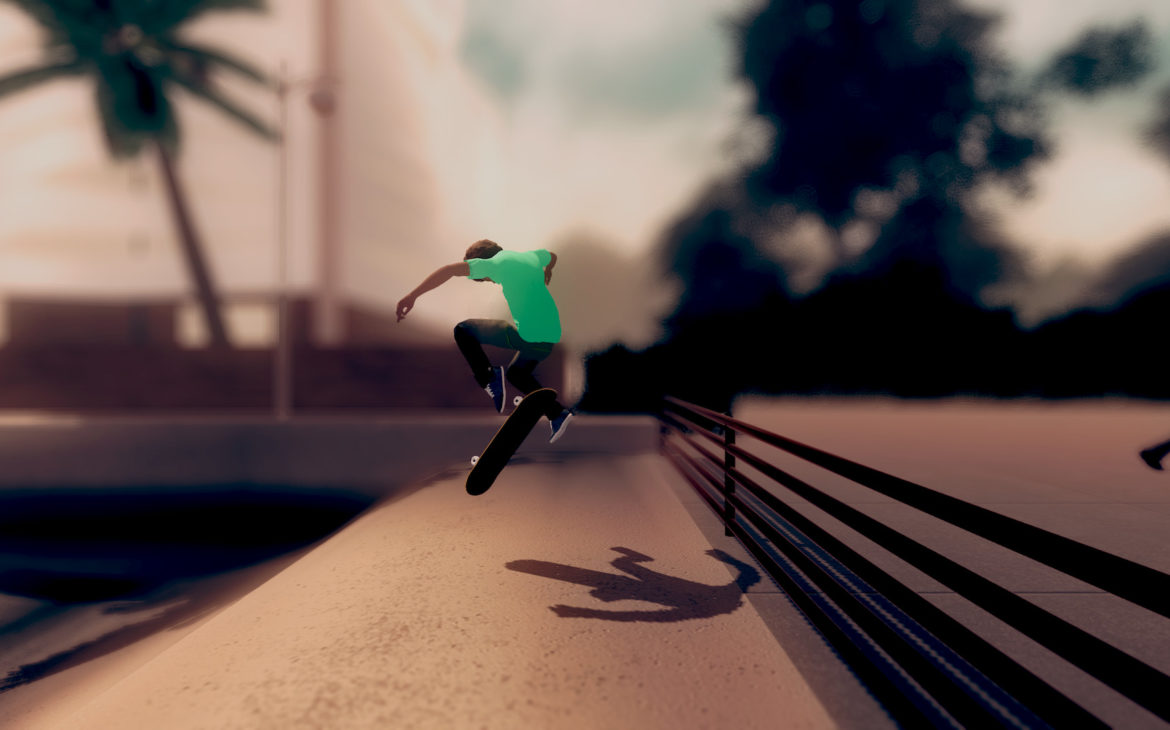
Gnarly Thumbs, Bro
The pictures probably haven’t made it entirely clear, but Skate City is a 2D game. Well, you skate on a 2D plane, with some ledges and rails because slight fore or background. Alright, 2.5D if you want to be pernickety.
What this means is that you don’t have to worry about navigation, which would normally be a left thumbstick function. Instead, both perform board tricks. Depending on your stance (we’ll consider Regular is left foot forward), the left stick acts as the back foot, the right the forward.
Similar to Skate, you hold a direction to “preload” the jump, and letting go will see that performed. Ollies, kickflips, hardflips and more are directionally mapped, so the incentive to use all angles adds variation. Spins are mapped to the L and R buttons (on Switch), whilst ZL and ZR start manuals (skateboard wheelies) on flat ground or grinds on rails/ledges.
It takes a while getting used to both sticks, as the back foot offers Ollie-based tricks whilst the front are Nollie-based (nose Ollie) tricks. Much like any trick-based game, it’s fiddly but not impossible. When you start making simple lines (trick sequences) of an Ollie to a manual, before 180° kickflipping into a grind and landing with a nose manual, you’ll be pleased. Some of those words may not have made sense to you if you’ve never ridden a skateboard or played a Skate game, but it will over time.

Even The Challenges Are Chill
Whether it be in starting location Los Angeles, literally chilled Oslo or sunny Barcelona, there’s plenty of challenge to keep you going. But it’s not challenging like, say, the frustration-inducing degree of Trials.
They start off simple enough, performing the prerequisite trick or hitting a score amount. It can be awkward landing a hardflip in a small circle or chaining two tricks together, but there’s incentive there to keep trying.
Over time, it’ll turn into timed runs with higher scores, or a larger amount of tricks to pull off without missing one. But this is gradual, easing you in to higher challenge than whacking great difficulty spikes in. There’s even some fun ones, such as racing another skater or outrunning the police whilst obstacle hopping.
The beauty is you don’t have to do the challenges to have a good time. Endless Skate has its own set of challenges that can be unlocked naturally. When you’re skating an infinite loop, chances are you’ll unlock some of these without trying: certain grinds on ledges, spins over features, etc.
Which is ideal, if you want to get more customisation out of this game.
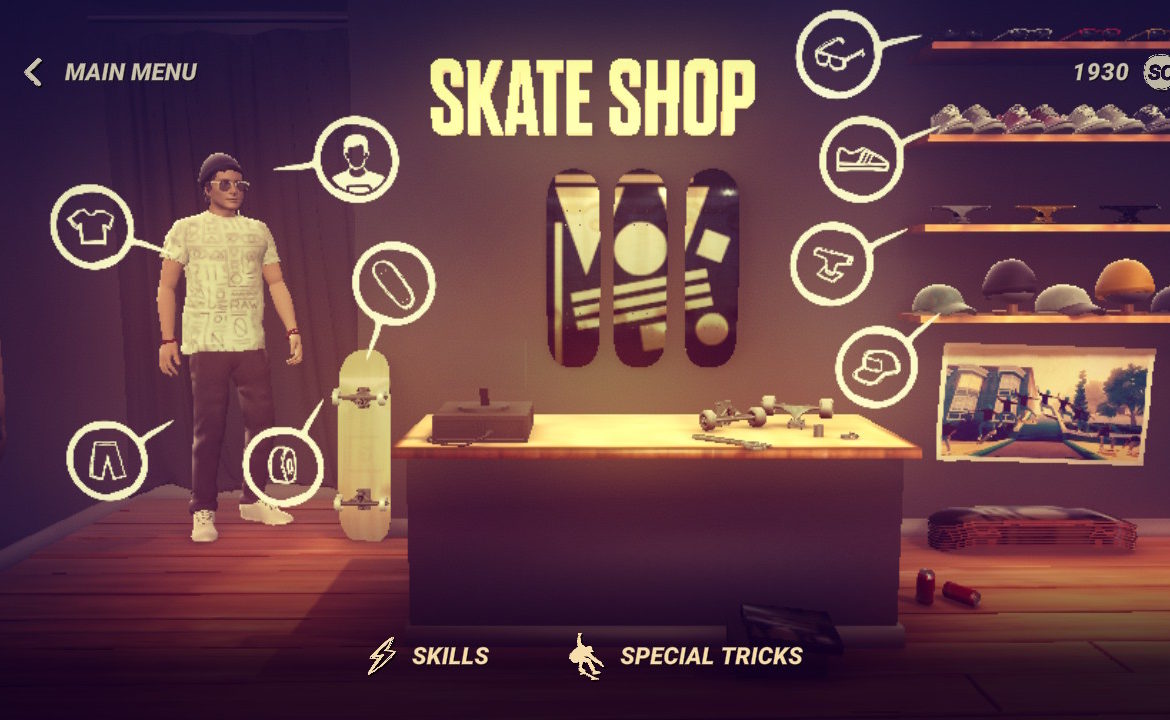
Grinding Out For The Goodies
Now, mentioning the word “grind” outside of the skating context sounds like I’m about to drop a massive caveat. Nothing halts your progress like the proverbial pebble getting stuck in your wheel and it all coming down.
Worry not, however, as there is nothing insidious in Skate City. There are no microtransactions, no hidden paywalls or levels stuck in DLC packs. Everything you earn is in-game, brought on by completing challenges. What this unlocks is Skate Cred, the game’s currency. You need a chunk to unlock the next locations, but after that it’s just sat in your pot. Well, until you enter the skate shop.
There’s no licensed brands in here, but there is a fair variety of deck and clothing options to pick on. It’s purely cosmetic, and almost slightly redundant given how small the skater is on screen, but who cares? It’s nice to have some life in your avatar. White sunglasses and a beanie? A deck that looks like the top of a sock or a hotdog? Go nuts, he’s your skater.
All of this is purely cosmetic. There’s no stats to improve, no level system or gear hiding behind said system. It’s just a fun little gimmick to add some individuality to proceedings. Which I can get behind: you’re earning this for you and yours, not some unfair multiplayer boost or whatnot.

Couldn’t Stick Every Landing
Unfortunately, being a smaller indie game, Skate City doesn’t escape a few technical issues. Nothing game-breaking, just mildly inconvenient.
There are times when the collision detection can be exaggerated. Players might think they’ve cleared a fallen trash can, and it may even look apparent. But the game, however, might not think it did and call it a bail. On occasion, the line between foreground/background blurred and where I thought I was clearing a gap turned into a magnetic ledge grind that slowed me down… mid-flower bed.
In terms of interface and flow, there’s a few grumbles. Say you’re on a challenge and you have to hit five tricks in a row, but mess one up. The quickest option would be to pause and retry it, right? Get right back into the action. Alas, that’s not an option. You have to quit out of it, go back to the challenge menu and select it again.
Even upon completion, there’s no “Next challenge?” prompt to keep it flowing. Again, you have to go back and manually select the next challenge. It’s not game breaking, it would just be nice to keep that rhythm going onto the next one, save stopping and starting each time.
As far as performance gripes, the only nitpick I can aim is that the skater/pedestrian models look bland. Your skater, even when close up in the customisation screen, looks like an Action Man posing as an undercover skateboarder. Although it doesn’t matter as for one, you’re zoomed out when you skate and two, it fits the minimal(ish) vibe of the game, it looks a bit jarring.
As I say, these are just mild contrivances rather than massive issues. It doesn’t ruin the experience, but somewhat staggers the pace at times.
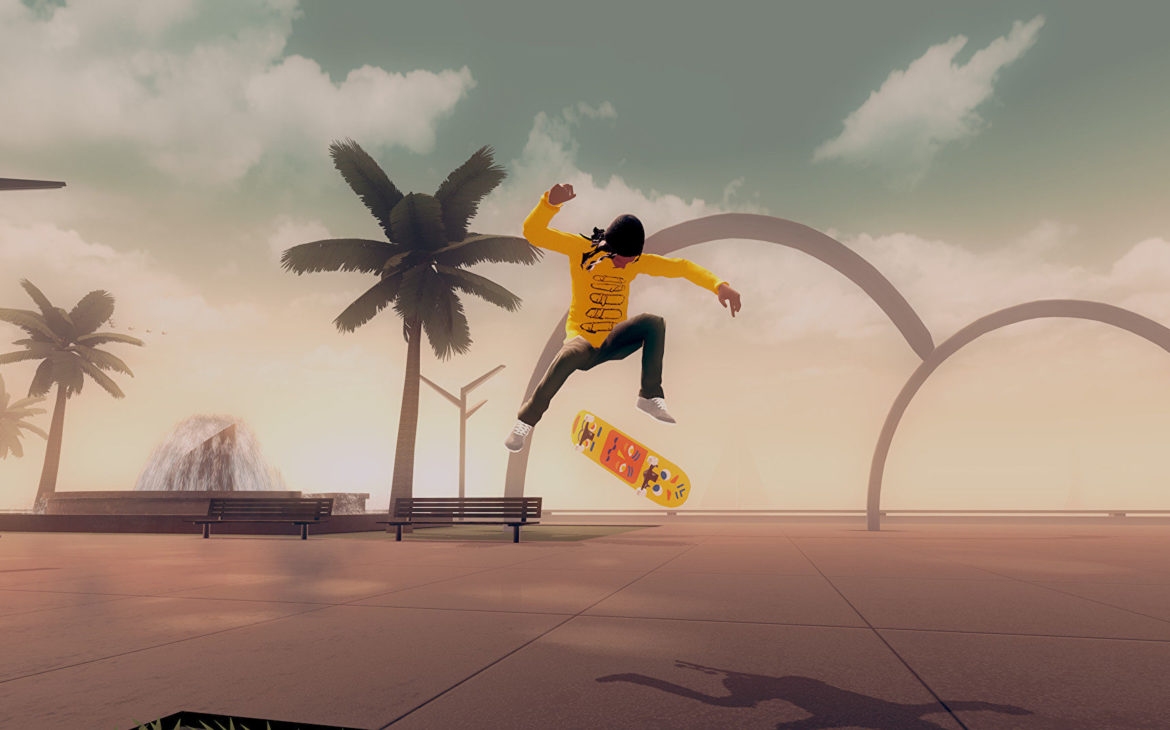
Hitting The Serene Streets
Minor pacing issues aside, Skate City is a blast to play. It really is the epitome of “chill gaming”, not meant to frustrate and test your skill constantly. Even the review information we had suggested playing it in half hour bites, rather than plough several hours in at a time. And they were right.
If you go into this with a grim determination to max out all the challenges, it’s the wrong mindset. Take your time with it, enjoy the peaceful loops of endless skating as priority. The challenges are there when you feel like it, not because the game demands it. There’s enough to keep you going in each locale that there’s no impetus to rush to the next one.
There’s no multiplayer to Skate City, mind. Some might see that as a detriment, but personally, I don’t. It doesn’t have to be all high scores and competition. Sometimes you want to just have some solo skating fun. It’s how Rodney Mullen prefers to skate, so why would you argue with that?

The Final [Trick] Line
In terms of concept, Skate City isn’t revolutionary. Despite my earlier examples, this isn’t “The beauty of Journey in skateboarding form” or anything daft like that. They were just examples of calming games, is all.
But it is a very chill game, and that’s what makes it great. Snowman have built a game decided to make you relax first and push yourself second. There doesn’t feel like you’re missing out on anything if you don’t tackle as many challenges as you can, rather than if you feel like it.
There are a few niggles mentioned about, but they certainly won’t ruin the fun. Skate City isn’t going for exactly scaled realism, nor the extremes that the sport is associated with. It’s having fun with some laid back tunes, an open yet 2D playground and endless hours of skateboarding.
Have I finished a massive percentage of the challenges or unlocked all of the gear? No, but as I don’t feel obligated to it’s made me want to go back and unlock them. This is the epitome of “pick up and play” gaming, something to kill time with or kick back on without getting all worked up. Tony Hawk’s and OlliOlli are still there, in no way threatened by this. Rather, this just adds a new option to skateboarding games: the relaxed kind of game.
A simple game with a new control scheme to get used to, Skate City is no frills fun. Yet rather than sounding detrimental, the chill vibe it brings to addictive arcade gameplay is a welcome addition to the handful of skateboarding games on the market.

Skate City is available from May 6th on Nintendo Switch (reviewed on Switch Lite), PlayStation 4, Xbox One,PC and [already on] Apple Arcade.
Developer: Agen Games
Publisher: Snowman
Disclaimer: In order to complete this review, we were provided with a promotional copy of the game. For our full review policy, please go here.
If you enjoyed this article or any more of our content, please consider our Patreon.
Make sure to follow Finger Guns on our social channels – Twitter, Facebook, Twitch, Spotify or Apple Podcasts – to keep up to date on our news, reviews and features.



